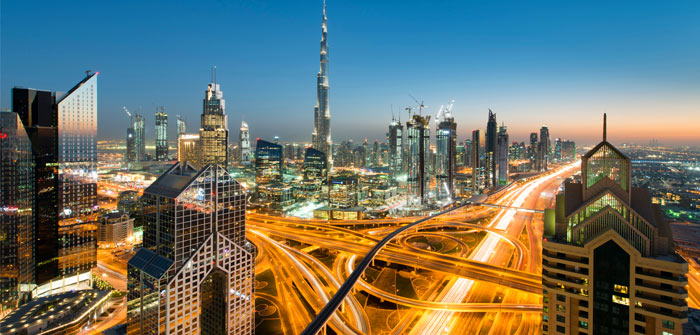Modern Dubai is a model 21st century city, with its prosperity being an outcome of the past 20 years of intensive development. Dubai has evolved from a fishing settlement to a trading port, and has now become the commercial and economic hub of the UAE and Middle East.
The Bani Yas Tribe
In the early half of the eighteenth century, Dubai was primarily a small village of fishing and trading. It is found after research that Dubai existed 150 years before the formation of UAE.
In 1833, a large influential group of Bani Yas tribe, estimated to be about eight-hundred tribesmen, led by the Maktoum bin Butti (Al Maktoum family), migrated from Abu Dhabi to Dubai. They settled down in the fishing village on the Creek’s Shindagha peninsula.
They were descendants of the Al Bu Falasah section of the Bani Yas, a powerful tribal federation that dominated the Arabian Peninsula (today’s UAE). The Bani Yas tribe, which consisted of twenty sub-sections, was one of the most significant and highly regarded tribes of Southern Arabia.
Since 1833, the Al Maktoum family has ruled Dubai. Under their rule, Dubai has prospered from a fishing settlement to a major trading port on the Gulf coast, to one of the most economically vibrant and futuristically advanced cities in the world.
The Formation Of United Arab Emirates (1892 – 1971)
In 1892, Dubai signed the ‘Exclusive Agreement’ of the British Council and came under the safeguard of the United Kingdom, which consented to save Dubai from the attack of the Turkish Empire or the Ottoman Empire. In 1894, trading in the area was given yet another boost, as new rules granted tax exemption for expatriates.
After independence from Britain on 2nd December 1971, Dubai along with Abu Dhabi, Sharjah, Ajman, Umm Al-Quwain, Ras Al-Khaimah and Fujairah formed the federation of the United Arab Emirates. At that time, Dubai was known for its pearl exporting, but it was in 1966 that the fortune of the emirates completely changed with the discovery of oil reserves.
Its economy began to flourish in 1969, with the export of oil. The national flag of UAE was hoisted on December 21, 1971. However, Dubai has its own flag.
The Creek – Fishing Communities, Pearling And Herding
Evidence of civilization about the Creek, the backbone of Dubai’s booming economy, can be traced back to four thousand years to the early 18th century. This was the time when fishing communities settled along the Arabian Gulf coastline. Besides fishing, community members also earned their livelihood through pearling and herding of sheep and goats.
Later, since the 1970s, the rise of the Creek and the natural harbor as a major trading port can also be attributed to its presence on the ancient Mesopotamian – Indus Valley trade route. Archaeological evidence (such as artifacts, coins, and weapons) supporting the same, have been unearthed and can be found at the Dubai Museum. The archaeological sites – Al Qusais, Al Sufooh, Jumeirah and Hatta are also open to public or can be visited with special permits.
It was on August 19, 1909, that Dubai opened its first post office under the pressure of the local business community. It is more interesting to know that Indian stamps were used on mail from Dubai, from the emergence of the post office till the inception of Pakistan.
If we view the educational background of Dubai, it is highlighted that before 1962, proper schooling was not available. It was in this year that oil trading began in Abu Dhabi, and a necessary change was noted in the educational system of the whole of UAE.
Today Dubai has become one of the fastest growing financial and business centers in the world. E-commerce has been adapted and the speed of infrastructure and technological development is high. It has become a far-reaching international market for both the East and the West.
